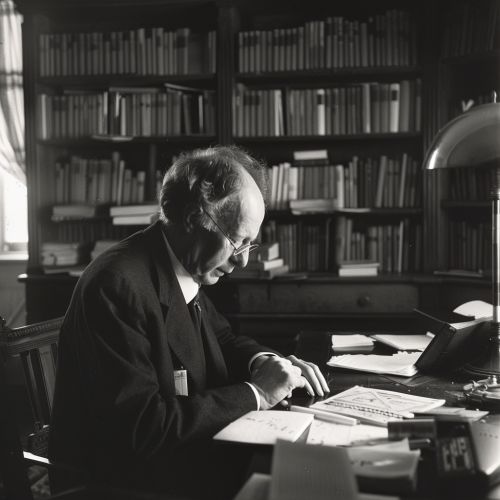Temporal Logic
Introduction
Temporal logic refers to any system of rules and symbolism for representing, and reasoning about, propositions qualified in terms of time. It is a formal tool for reasoning about time and temporal order, and is used in computer science to model the behavior of computer programs and digital circuits over time.
History
Temporal logic was first introduced by the philosopher Arthur N. Prior in the late 1950s. Prior's work was based on the logic of propositions which are true or false at certain points in time. This contrasts with classical logic, which does not have any operators that capture the temporal aspects of truth.


Syntax and Semantics
The syntax of temporal logic is similar to that of classical logic, with the addition of temporal operators. These operators allow us to express statements about the past, present, and future. The semantics of temporal logic, on the other hand, is usually given in terms of Kripke structures or similar models.
Temporal Operators
Temporal operators are used to express time-dependent propositions. The most common temporal operators are:
- Next: The proposition is true at the next point in time.
- Eventually: The proposition is true at some point in the future.
- Always: The proposition is true at all points in the future.
- Until: The proposition is true until another proposition becomes true.
Linear Temporal Logic
Linear Temporal Logic (LTL) is a type of temporal logic where time is viewed as a linear sequence of discrete moments. LTL is widely used in formal verification, especially in model checking, to specify properties of systems.
Branching Temporal Logic
In contrast to LTL, Computation Tree Logic (CTL) is a type of temporal logic where time is viewed as a tree of paths, each representing a possible execution of a system. CTL allows us to express properties such as "there exists a path where a certain property holds".
Temporal Logic in Computer Science
Temporal logic has found wide application in computer science, particularly in the specification and verification of concurrent systems. It is used in formal methods such as model checking to verify properties of systems, such as whether a mutual exclusion algorithm ensures that no two processes enter their critical sections at the same time.


Temporal Logic in Artificial Intelligence
Temporal logic is also used in artificial intelligence (AI) to represent and reason about time-dependent knowledge. For example, it can be used to represent the knowledge that "if it is raining now, it was cloudy earlier".
Conclusion
Temporal logic is a powerful tool for reasoning about time and temporal order. It has found wide application in fields as diverse as philosophy, computer science, and artificial intelligence. Despite its complexity, temporal logic provides a formal and rigorous framework for dealing with time-dependent propositions.
